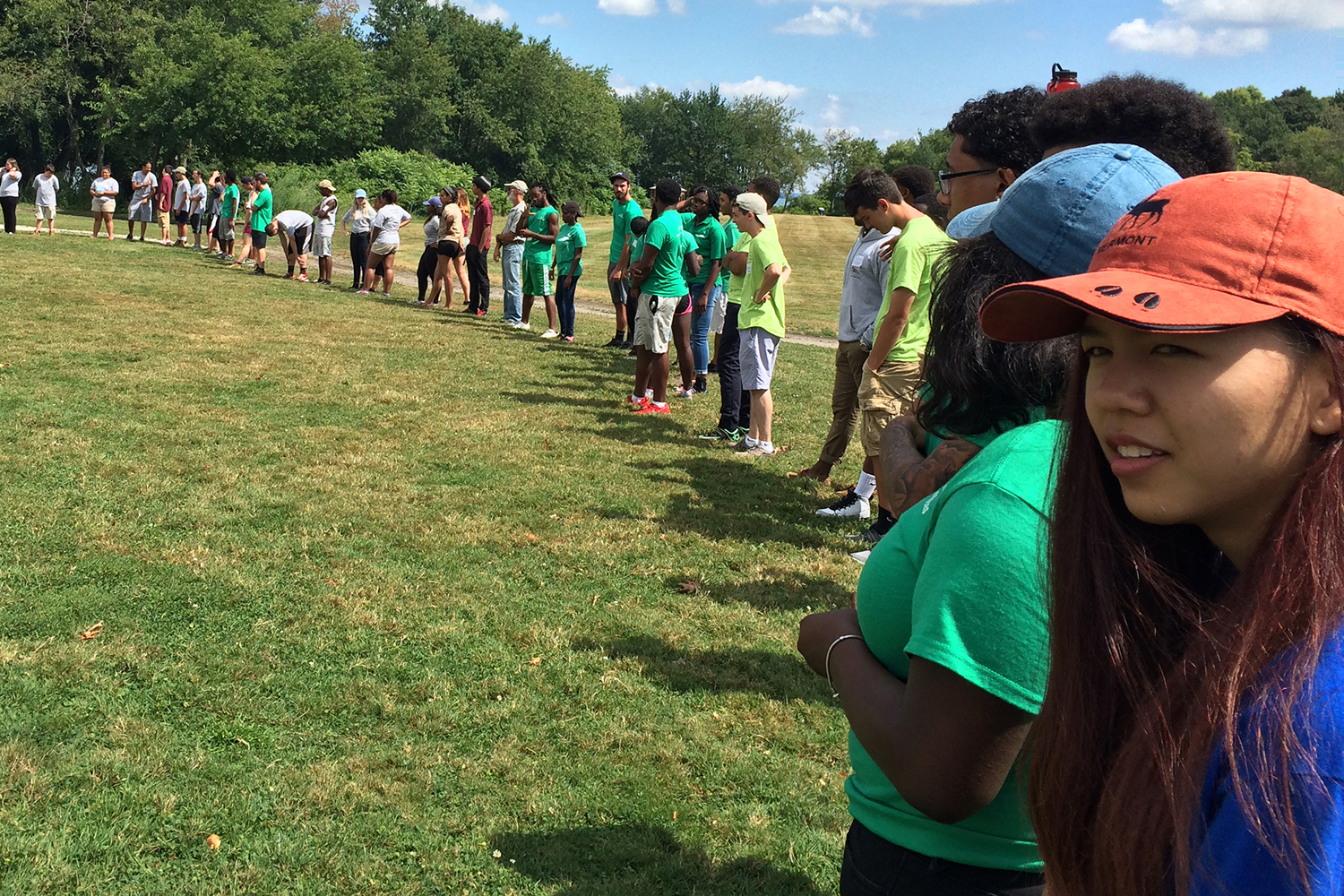1. Database Management
As in any successful venture, maintaining and updating a good database is essential for communication. This is especially helpful for recruitment.
2. Recruitment and Selection
Recruitment for the Youth Summit should strive to ensure a broad variety of applicants, with a range of cultural and racial affiliations, from urban, rural and suburban schools. The Youth Summits are not a field trip, a camp, or recreational outing. A Youth Summit is an educational event requiring active and committed participation. Make this point at every opportunity. Require students to actively participate and select students based on their demonstrated interest to do so. Encourage students, educators, mentors, and service leaders to apply as a group. Alternatively, students could apply on their own and be assigned to a mentor and chaperone.
The first step in the recruitment process is to develop and post an application form that allows you to screen applicants, but that also recognizes students' age, maturity, and experience. Application forms should encourage Summit applicants to express their dedication and interest in historic preservation, but not intimidate or deter them with onerous expectations. Within the project timeline, a review team should be able to review and select applications and then also promptly contact and stay in touch with accepted students. Online applications ease communication and uniformity of submission.
3. Selecting Participants
The number of participants selected varies based on the scope of each individual Summit. Numbers are based on the appropriate visitation capacity for historic places, lodging, and transportation considerations, and the impact on the local community.
Share information about applications with past participants; post it on websites; and distribute through partner links and list serves to social studies teachers, other educators, preservation groups, and service organizations. Participants complete an application, including essay questions, by a specified deadline.
Select Summit participants through a competitive application process based on previous contribution to, and personal interest in, historic preservation and a commitment to using their Youth Summit experience to expand preservation and heritage tourism efforts in their own communities. New participants can demonstrate personal interest in lieu of prior experience with preservation programs. This combination of personal interest and past participation provides an impetus for future sustainable involvement in the goals of this project.
Select participants using a screening panel consisting of preservation leaders, educators, and key personnel of the Summit. Give consideration to geographic and cultural demographics of student participants, and also to applicants' capability to follow-up in their respective communities.
Extend full scholarships to Summit participants, including lodging, transportation, program costs, and activities costs to ensure all candidates are considered on a “need-blind” basis. Consider an effective ratio of returning alumnae and new participants. New participants extend your reach, while returning students offer a broadening perspective through continued experience with Summit programs. Cultivation of a returning group of students strengthens the involvement and commitment of the Summit student network, resulting in participants who have returned to their communities and implemented projects in their local area, sharing these experiences with first time Summit students. These community projects might include the further development of museum collections, oral history projects, development of local heritage tourism projects, community re-development and revitalization projects.
4. Participant Communication
Once selected, participants need to be confirmed and reconfirmed … and reconfirmed! During the confirmation process, be sure to communicate expectations for behavior. Students (and educators or mentors) will be expected to exhibit professional character during the Summit. Clearly define a zero tolerance for abuse of shared behavior guidelines. Provide written materials outlining behavior guidelines and other practical matters such as dress code, packing lists, and emergency contact information. Verify that participants have received and acknowledged Summit expectations.
5. Form, Forms, Forms
Require written confirmation and include several forms to be completed by all participants.
These forms should include the following:
-
Commitment to Attend with contact information
- Consent and Release Form for participants
- Photo Release Consent to Use Photos on Website and Publications
- Dietary or Other Restrictions
- Medical Form for administration of medications if needed
- Additional consent forms for special activities
6. Registration
Registration for Youth Summit includes processing of confirmed applicants' release and consent forms, communication with participants, and actual on-site management of check-in and registration issues. At registration, participants should receive a packet to include:- Nametag
- Lodging assignment
- Emergency contacts
- Schedule
- Rain plan
- Worksheets with theme and guiding questions
- Notification of group leader
- Giveaways
- Sponsor acknowledgment
- Behavior expectations
Last updated: August 14, 2018

